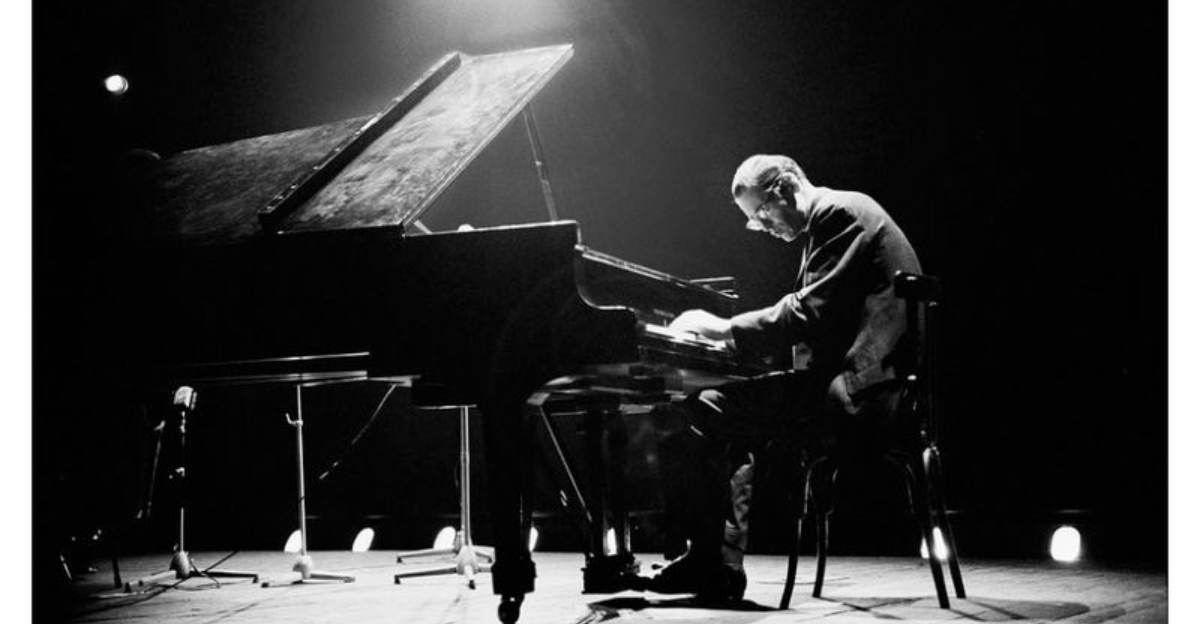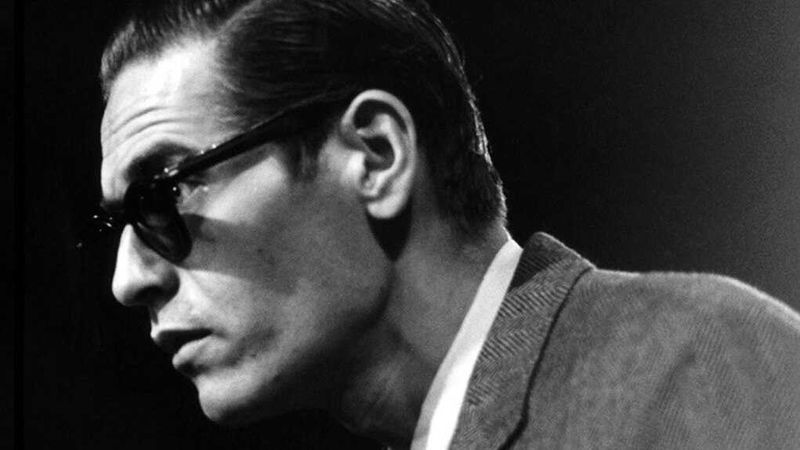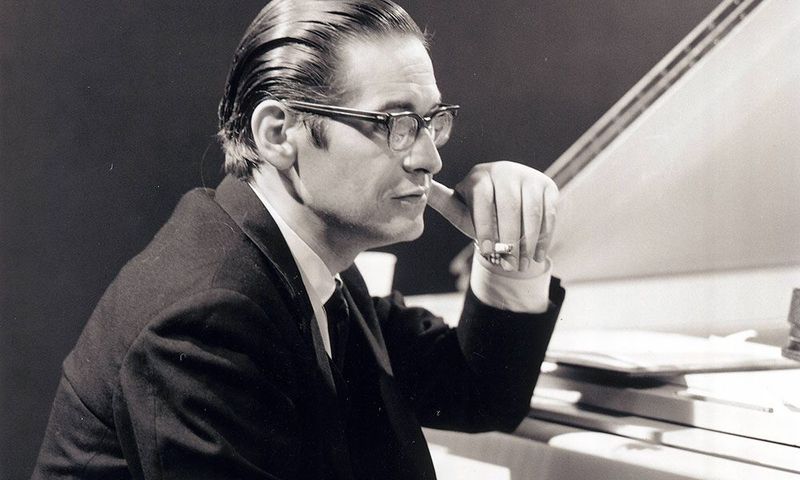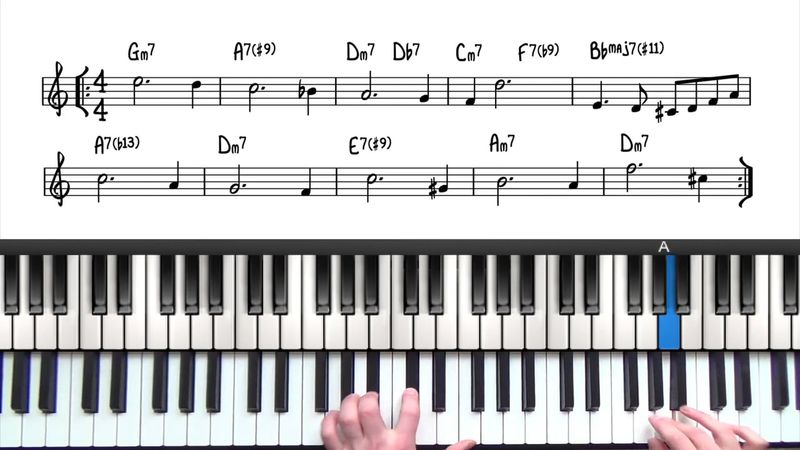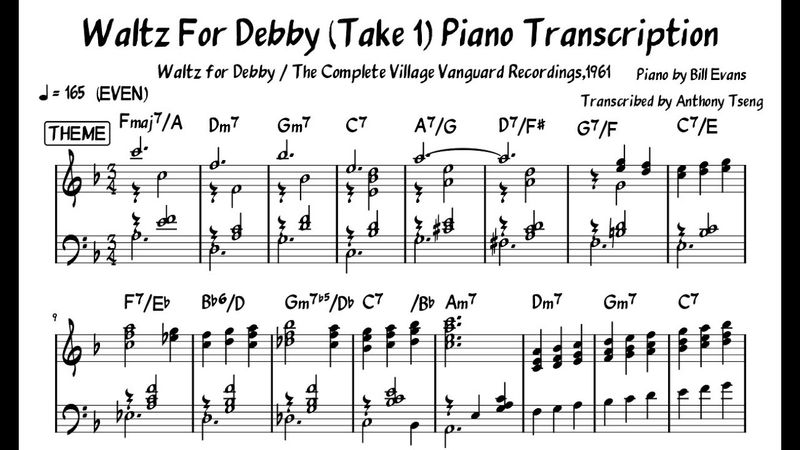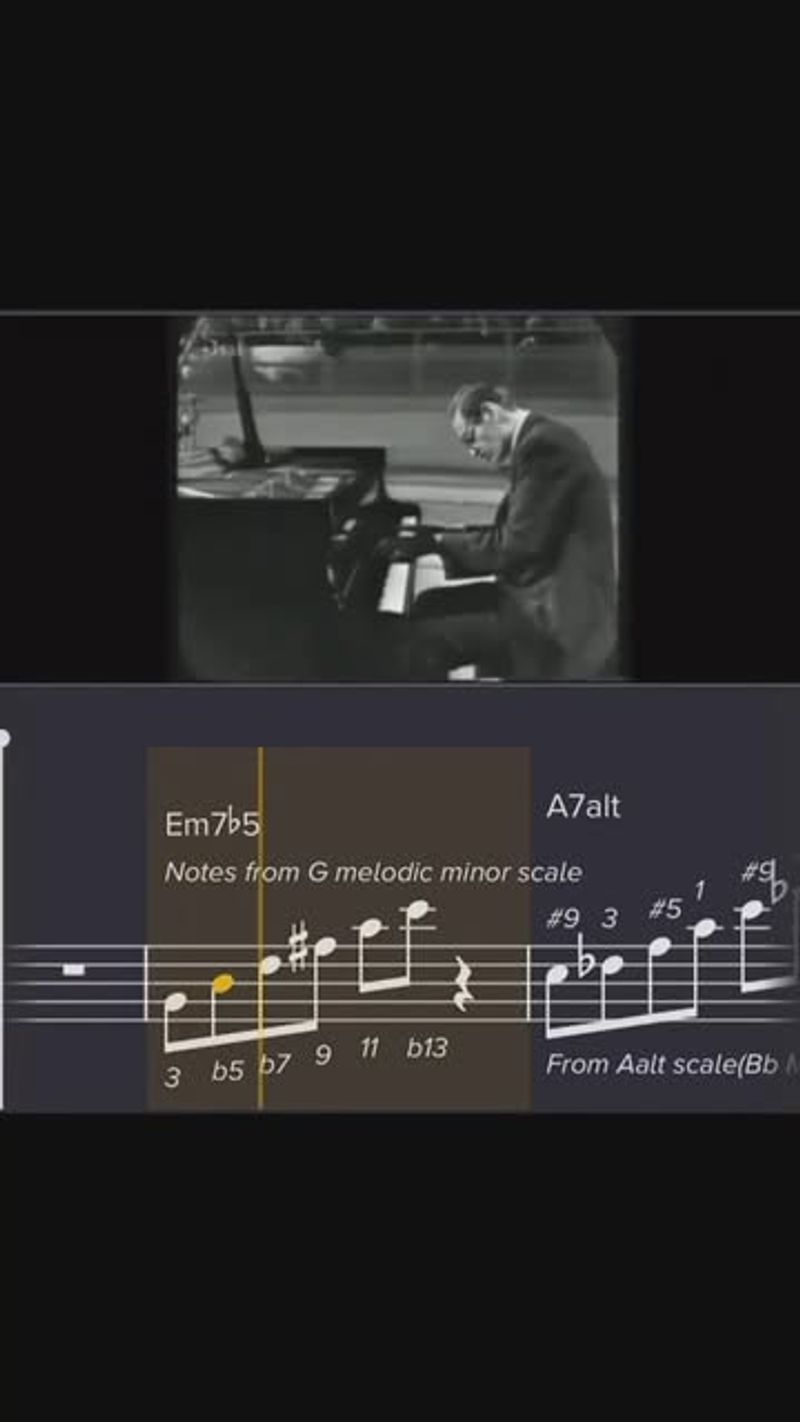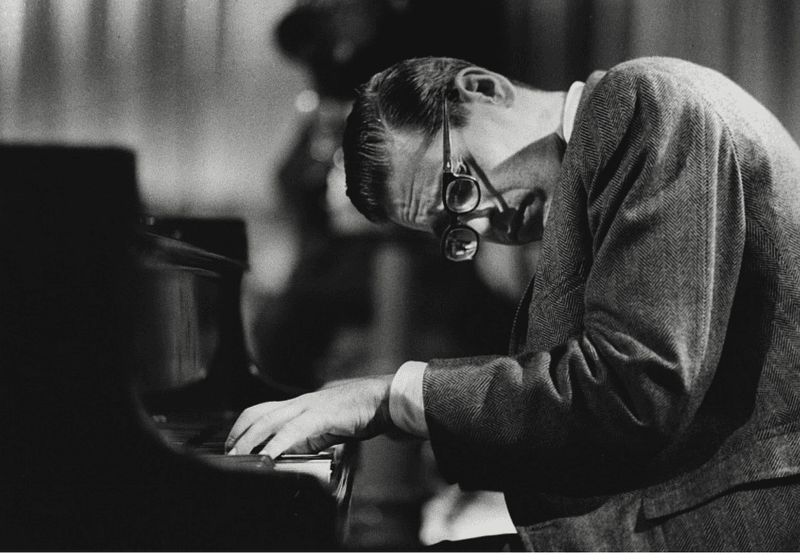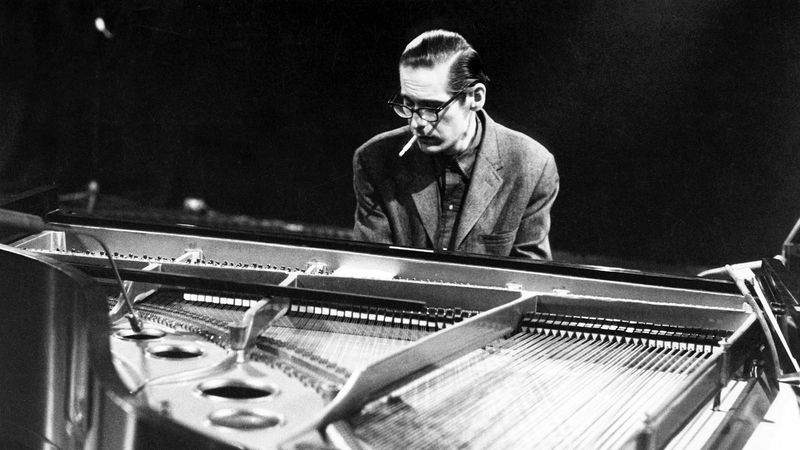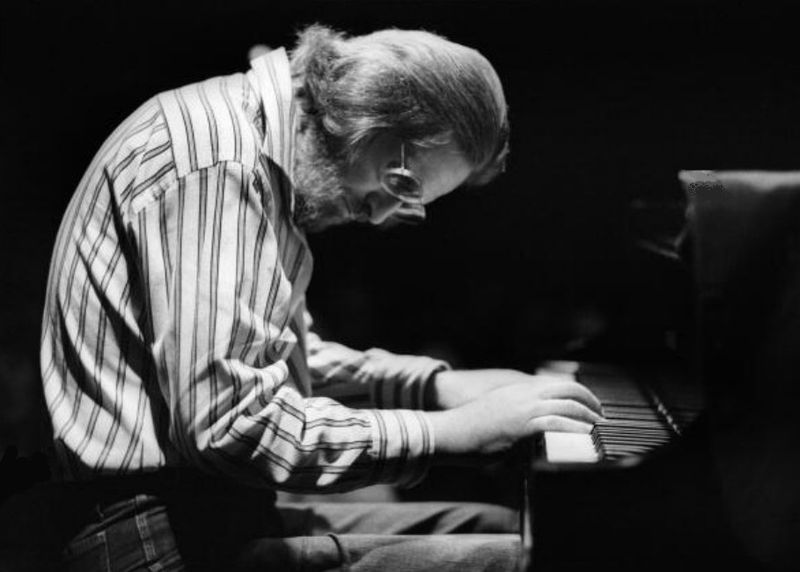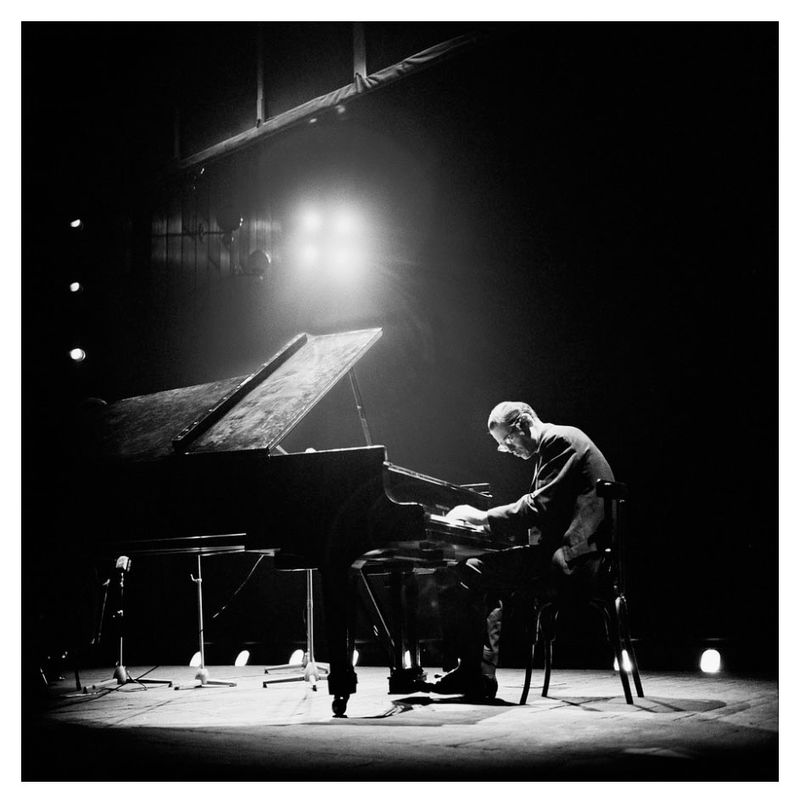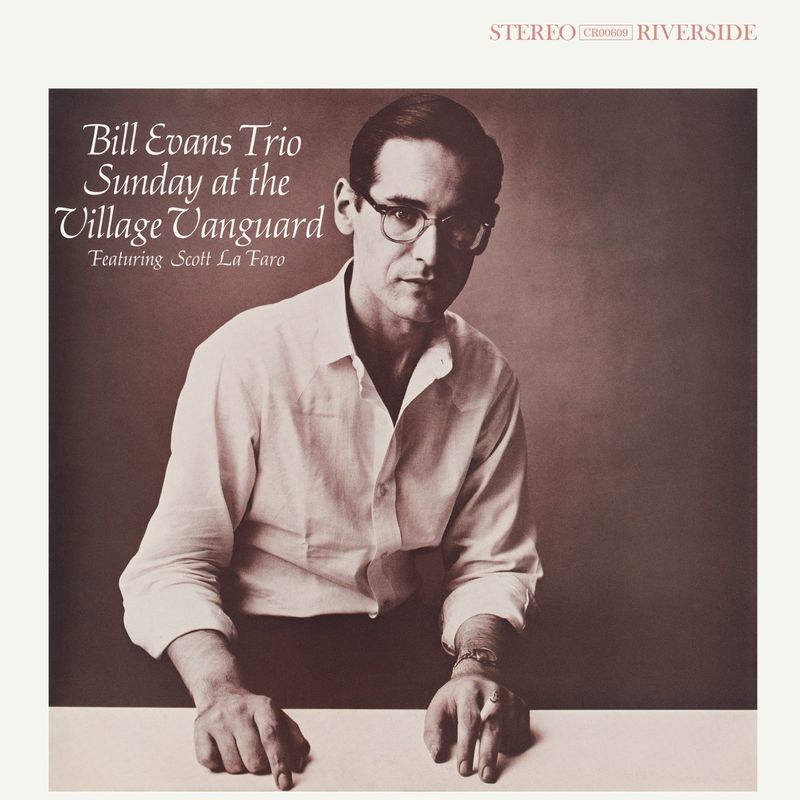Bill Evans transformed jazz piano forever with his unique harmonic approach. His delicate touch and innovative chord voicings created a sound that feels both timeless and deeply personal.
Even decades after his passing in 1980, Evans’ musical fingerprints can be found across jazz, film scores, and contemporary piano music, continuing to move listeners to tears with their emotional depth.
1. He Used Chords Like a Painter Uses Light
Evans layered tones like brushstrokes, blending colors with lush voicings that shimmered rather than shouted. His harmonies weren’t just notes on a page but emotional landscapes that changed with each subtle shift in voicing.
Listen to “Peace Piece” and you’ll hear how a simple C major becomes a canvas for countless harmonic colors. Evans understood that harmony could express what words couldn’t—the spaces between joy and sadness.
Many pianists play chords; Evans illuminated them from within, finding the exact voicing that would pierce your heart without warning.
2. He Embraced Silence as Powerfully as Sound
The magic of Evans’ playing wasn’t just in the notes he chose, but in the breath between them. Those deliberate pauses created emotional gravity that pulled listeners deeper into the music’s heart.
Famous recordings like “Blue in Green” showcase how Evans would let a chord ring out, then wait—forcing you to feel its full impact. This wasn’t empty space but pregnant silence filled with meaning.
Miles Davis once remarked that Evans could “play the sound of surprise.” Often that surprise came from knowing exactly when not to play, letting a moment of silence speak volumes.
3. Rootless Voicings Created Endless Possibility
Revolutionary doesn’t begin to describe Evans’ approach to chord structures. By removing the root notes and leaving them to the bassist, he freed his left hand to create ethereal, floating harmonies that seemed to defy gravity.
These rootless voicings became his signature sound—chord structures built from the 3rd or 7th that hover in midair. Jazz education today still teaches “Bill Evans voicings” as foundational concepts.
What made these techniques special wasn’t their complexity but how they served the music’s emotion. Each voicing choice opened new pathways for expression that jazz pianists continue exploring decades later.
4. He Favored Minor 9ths, Major 7#11s, and Altered Dominants
The bittersweet quality of Evans’ sound comes largely from his harmonic vocabulary. Minor 9th chords create that aching beauty, while major 7th chords with raised 11ths add a questioning, unresolved quality that keeps listeners leaning forward.
“Waltz for Debby” demonstrates how Evans could take these complex harmonies and make them feel inevitable rather than academic. His altered dominant chords don’t resolve predictably—they take surprising turns that mirror life’s uncertainties.
Evans once said: “Jazz is not a what, it’s a how.” His how involved these specific harmonic choices that somehow captured human emotion in mathematical precision.
5. He Reharmonized Standards With Surgical Precision
Taking familiar tunes and transforming them became Evans’ specialty. Songs like “Autumn Leaves” or “Someday My Prince Will Come” sound completely reinvented under his fingers, yet their emotional essence remains intact.
Evans didn’t change chords simply to be different. Each substitution served the emotional narrative, adding layers of meaning to already beautiful songs. His version of “My Foolish Heart” demonstrates how he could preserve a melody while completely reimagining its harmonic foundation.
Fellow pianists often describe studying Evans’ reharmonizations as revelatory experiences—seeing familiar landscapes from entirely new perspectives.
6. He Drew From Classical Influences
Evans’ formal training in classical piano profoundly shaped his jazz approach. The impressionist harmonies of Debussy and Ravel echo throughout his playing, creating that distinctive atmospheric quality that feels both timeless and intimate.
You can hear Chopin’s influence in Evans’ touch and voicing choices, especially in ballads like “We Will Meet Again.” Unlike many jazz pianists of his era, Evans didn’t reject his classical background but integrated it seamlessly.
This classical-jazz fusion created something entirely new—a sound that could be intellectually sophisticated while remaining emotionally direct and accessible.
7. He Let Tension Hang, Beautifully
Musical tension typically seeks resolution, but Evans mastered the art of suspending that moment—letting you linger in uncertainty. His recording of “My Man’s Gone Now” demonstrates this perfectly, with dissonances that hang in the air like questions without answers.
Evans understood that emotional depth comes from embracing discomfort rather than rushing to resolve it. This approach mirrored real human experience, where feelings rarely resolve neatly but often coexist in complex tension.
“When I play, I try to get to that state of non-thinking,” Evans once said. In that state, he found the courage to let musical tension exist without forcing resolution.
8. His Left Hand Was a Masterclass in Harmonic Voice Leading
While many focus on Evans’ right-hand melodies, his left hand performed subtle magic. Each chord connected to the next with minimal movement, creating smooth voice leading that made even dramatic harmonic shifts feel natural and inevitable.
Listen closely to “Turn Out the Stars” and you’ll hear how inner voices move by half-steps between chords, creating continuous lines within the harmony. This technique, borrowed from Bach and classical counterpoint, gives Evans’ playing its seamless quality.
Jazz education now teaches these voice-leading principles as fundamental, but Evans developed them through intuition as much as theory—his ear guiding his hand to find the most elegant path between chords.
9. He Played With Emotion, Not Just Technique
Evans’ technical facility was extraordinary, yet he never used it to show off. His delicate touch on the keys came from a place of emotional honesty rather than technical display, creating intimacy few pianists have matched.
The haunting quality in recordings like “Letter to Evan” comes from his ability to transmit feeling directly through touch. Fellow musicians often described watching Evans play as witnessing someone in a deeply vulnerable state.
“I believe in things that are developed through hard work,” Evans once said. But that work served something beyond technique—it built a bridge between his inner emotional world and the listener’s heart.
10. He Made You Feel Like the Only Person in the Room
Perhaps Evans’ greatest gift was creating an atmosphere of intimate conversation between performer and listener. Whether playing solo or with his legendary trios, his music felt like a personal confession shared only with you.
The Village Vanguard recordings capture this quality perfectly—despite the crowd, each moment feels private and revealing. Evans’ introspective approach invited listeners into his inner world rather than projecting outward.
This intimacy explains why so many feel a personal connection to his music decades later. Evans wasn’t playing for an audience but communing with the piano itself, allowing us to eavesdrop on something profoundly human and vulnerable.
